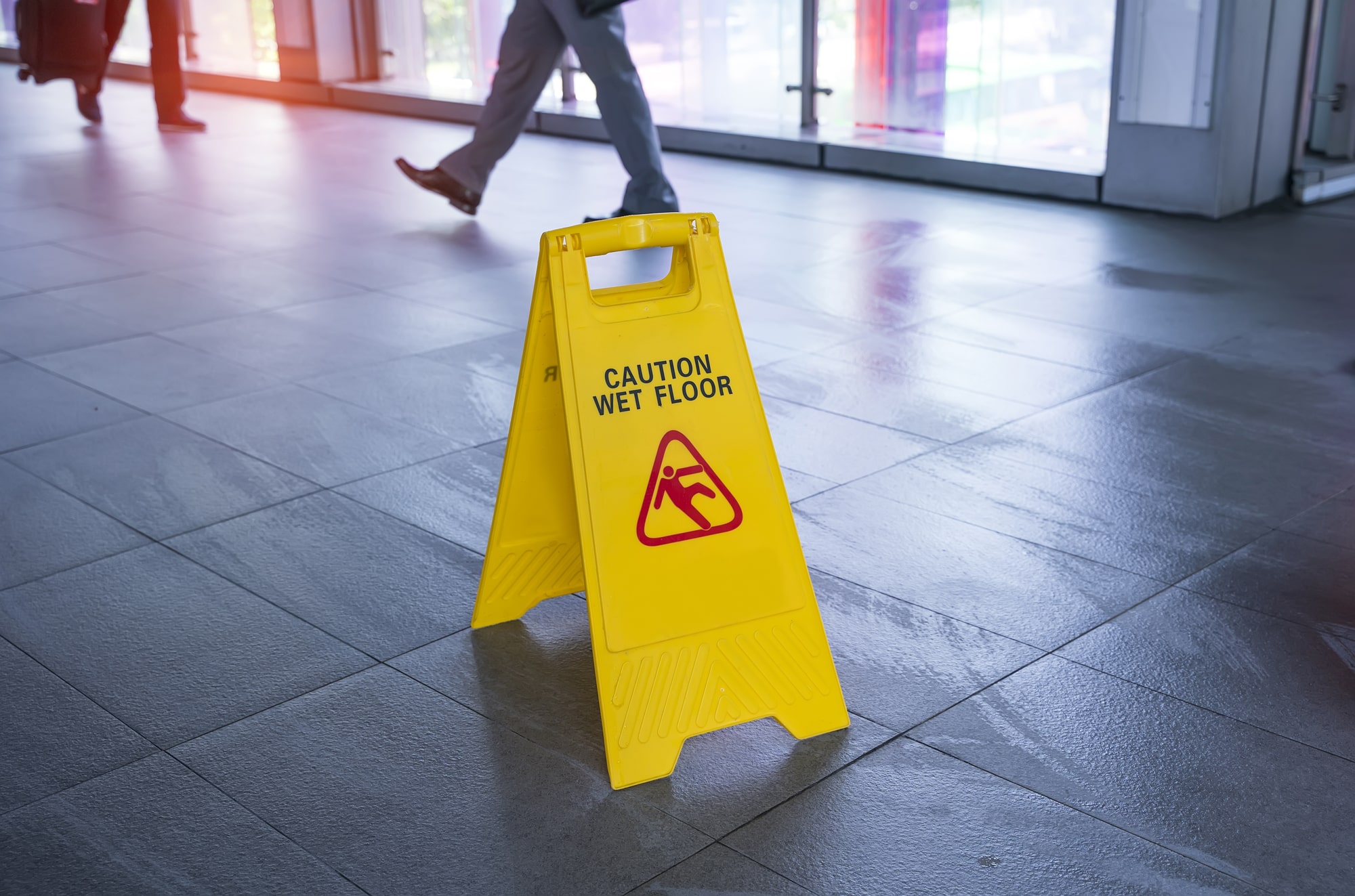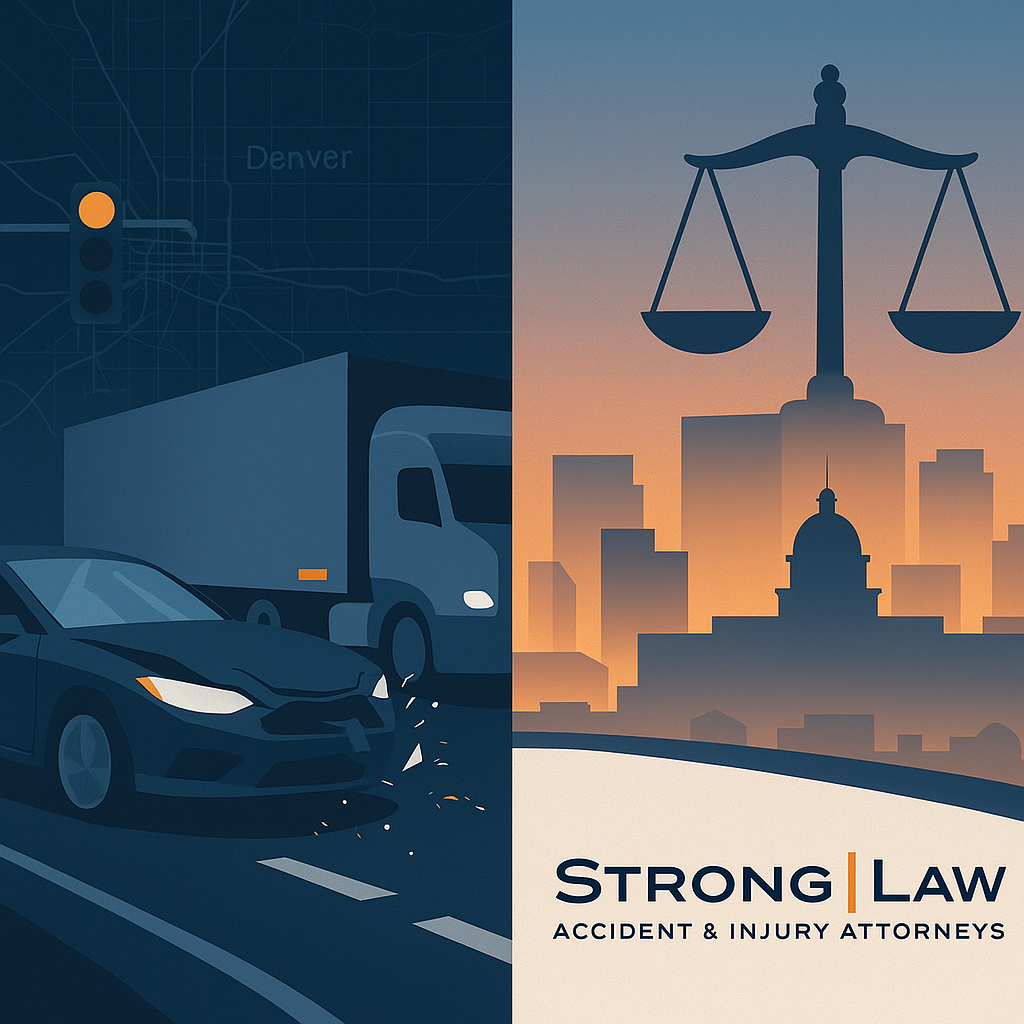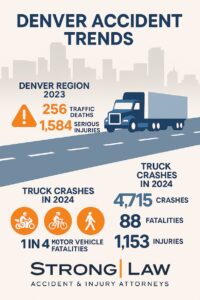Motorcycle accidents can leave lasting injuries, financial hardship, and uncertainty about what steps to take next. Our team at Strong Law Accident & Injury Attorneys is here to help. If you or a loved one has been hurt in a crash, speaking with our Oklahoma City, OK motorcycle accident lawyer can be an important first step toward getting the compensation you deserve. With a client-first mindset and a 4.9-star Google rating, our firm is proud to support riders across Oklahoma. Contact us today for a free consultation with our motorcycle crash lawyers.
What Should I Do Immediately After A Motorcycle Accident?
Start by getting medical care right away—even if your injuries feel minor. Next, call law enforcement to file an accident report. If it’s safe, take photos of the scene, your bike, and any visible injuries. Try to gather contact information from witnesses and anyone involved in the crash.
Then, reach out to our motorcycle injury lawyers. Our team can review your case and help you avoid mistakes that might affect your ability to recover damages. We bring real-world knowledge from working inside the insurance industry, helping us understand what information can move your case forward.
Can I Recover Damages If I Wasn’t Wearing A Helmet?
Yes, but it may affect your case. Oklahoma law doesn’t require riders over 18 to wear helmets. However, if you suffered a head injury and weren’t wearing one, the other party’s insurer may try to use that fact to reduce the value of your claim.
That said, our motorcycle wreck lawyer team has experience handling these types of cases. We know how to present medical records, liability details, and accident reports in a way that supports your recovery.
What If I Was Partially At Fault For The Crash?
Oklahoma follows a “modified comparative fault” rule. This means if you were less than 51% responsible for the accident, you may still recover compensation. Your settlement or award would be reduced by your percentage of fault.
Our biker accident lawyer team can examine the facts and help assess how fault may be divided. We’ve handled many cases where motorcyclists were unfairly blamed, and we know how to highlight the facts that matter.
How Much Is A Motorcycle Injury Claim Worth?
There’s no fixed amount for a motorcycle accident claim. It depends on your medical bills, time off work, future treatment needs, and how the crash impacted your life. Pain and emotional distress may also factor in.
We build strong cases based on real evidence. Our founding attorney, Jed Strong, worked for years as an insurance defense attorney, giving us insight into how insurers calculate payouts—and how to present a case that reflects your full losses. We use that insight to support our clients, helping them recover adequate compensation to cover their medical bills and lost income.
How Long Do I Have To File A Claim?
In Oklahoma, the general deadline to file a personal injury lawsuit is two years from the date of the accident. If you miss this deadline, the court may dismiss your claim entirely.
That’s why it’s best to speak with our Oklahoma City motorcycle accident lawyers as soon as you can. We can help preserve valuable evidence and keep your case on track from the start.
Let Us Help You Recover After An Accident
Motorcycle accidents can be overwhelming—but we’re here to help you deal with the legal aspects. At Strong Law Accident & Injury Attorneys, we focus on giving clients honest answers, dependable support, and the attention their case deserves. If you’ve been hurt, speak with our Oklahoma City motorcycle accident lawyers today. Our motorbike lawyer team is ready to help you move forward with confidence.













